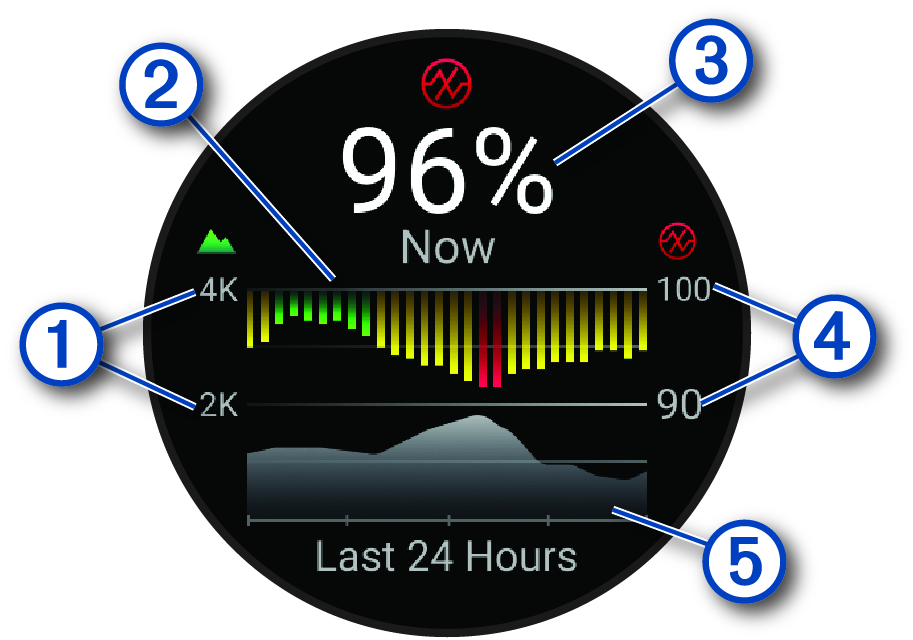Pulse Oximeter
Your watch has a wrist-based pulse oximeter to gauge the peripheral saturation of oxygen in your blood (SpO2). As your altitude increases, the level of oxygen in your blood can decrease. Knowing your oxygen saturation can help you determine how your body is acclimating to high altitudes for alpine sport and expedition.
You can manually begin a pulse oximeter reading by viewing the pulse oximeter glance (Getting Pulse Oximeter Readings). You can also turn on all-day readings (Turning On All-Day Mode). When you view the pulse oximeter glance while you are not moving, your watch analyzes your oxygen saturation and your elevation. The elevation profile helps indicate how your pulse oximeter readings are changing, relative to your to elevation.
On the watch, your pulse oximeter reading appears as an oxygen saturation percentage and color on the graph. On your Garmin Connect™ account, you can view additional details about your pulse oximeter readings, including trends over multiple days.
For more information about pulse oximeter accuracy, go to garmin.com/ataccuracy.

|
|
The elevation scale. |
|---|---|
|
|
A graph of your average oxygen saturation readings for the last 24 hours. |
|
|
Your most recent oxygen saturation reading. |
|
|
The oxygen saturation percentage scale. |
|
|
A graph of your elevation readings for the last 24 hours. |
- Getting Pulse Oximeter Readings
- Turning On Pulse Oximeter Sleep Tracking
- Turning On All-Day Mode
- Tips for Erratic Pulse Oximeter Data